Meet my new addition to my retro collection, the Amstrad 6128.
Ive never owned an Amstrad computer before and I absolutely love it.
I had to change the drive belt but other than that it works great and came with a few discs too.
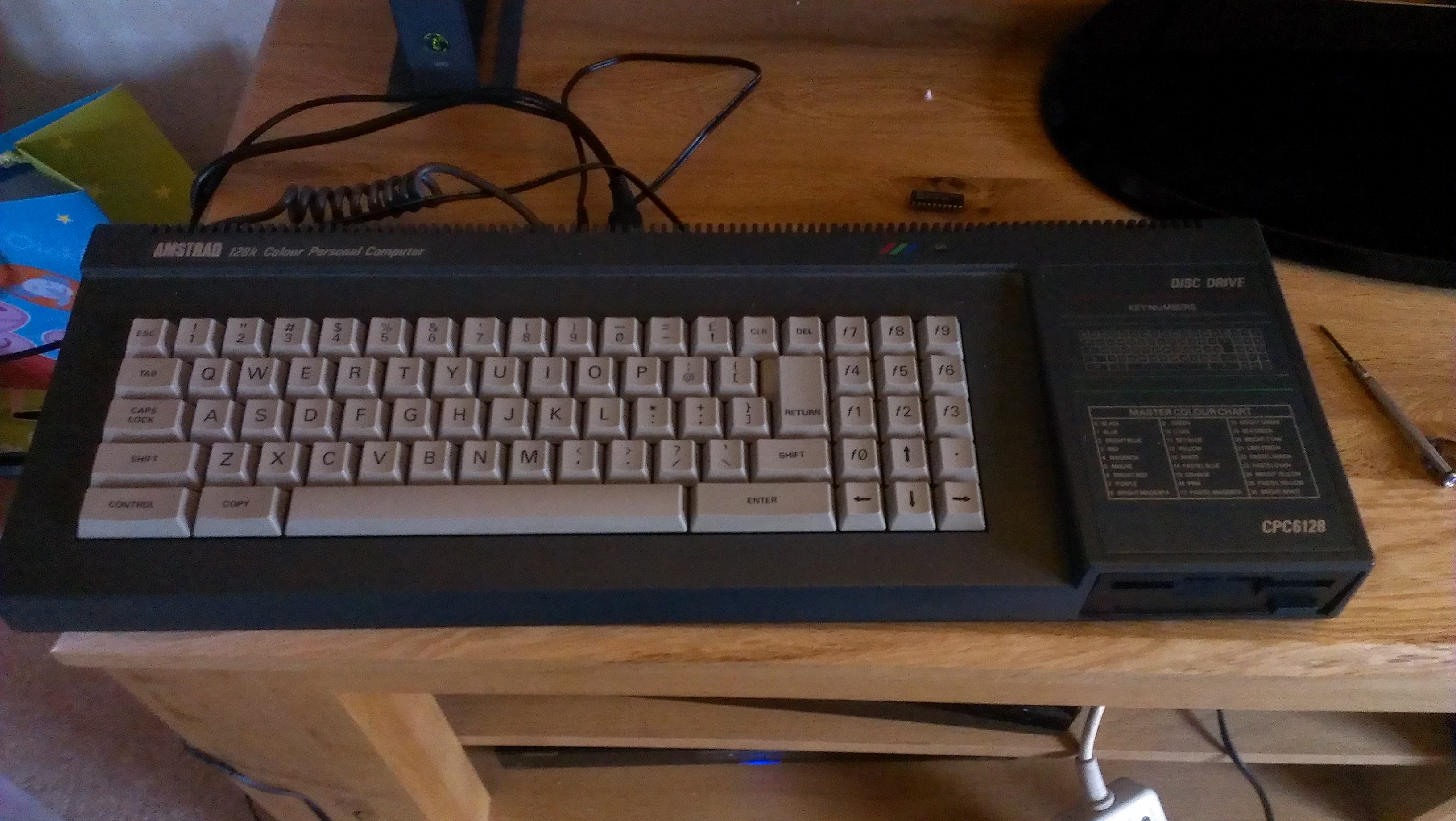
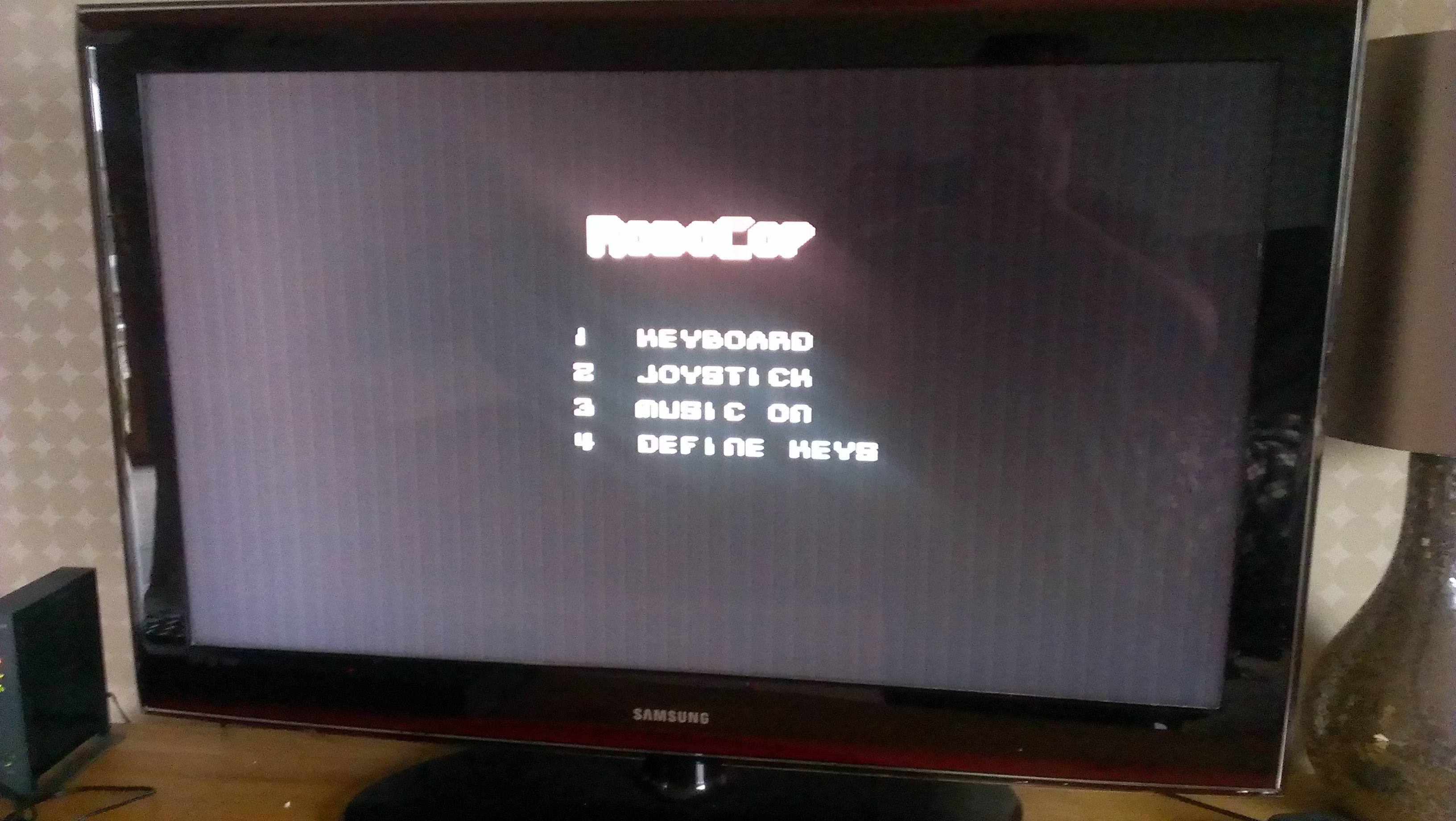
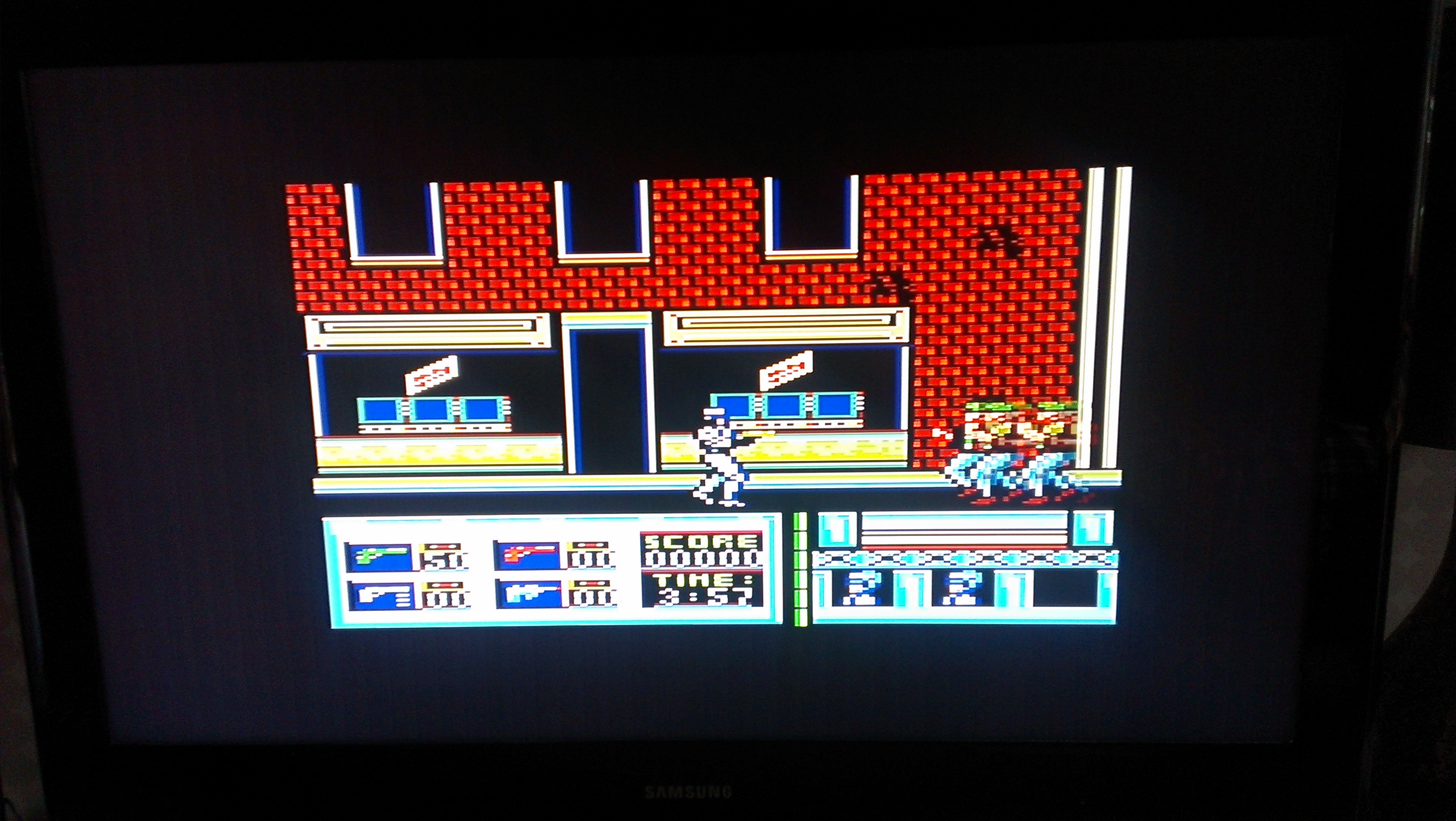
Meet my new addition to my retro collection, the Amstrad 6128.
Ive never owned an Amstrad computer before and I absolutely love it.
I had to change the drive belt but other than that it works great and came with a few discs too.



Ive made a lot of progress since my plea for help regarding this chip.
To recap, this chip could not be dumped in a programmer as it was security locked and I could not recreate its logic by the usual automated method due to the fact that this chip used latches, something that I had not seen before in a combinatorial device.
Due to the fact that this chip operates in a not often seen way I thought it would be good to write a bit about what Ive found, mainly the latches.
If you look at the schematics for this system you can see the HAL/PAL chip in all its glory.
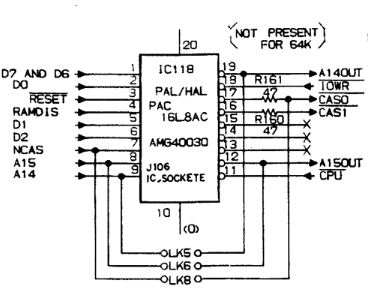
What I initially found was equations associated with the three X pins (pins 13, 14 and 15) but on the schematic they appear to be disconnected to which I assumed meant unused. You know what they say about assumptions right?
These three pins are where the latches come in. The Amstrad 6128 has 8 different memory selections from C0-C7. With these latches the system will always be in the same memory configuration until it is changed. Makes a lot of sense when you think about it or after every write to a specific memory location it would default back to C0. These configurations are derived from the D# pins but obviously those D# pins are used to send the actual data on too so without these latches the data bus would only be 5 bit.
Using a lot of logic analysis and a huge helping hand from Charles MacDonald I eventually got these latches working. All plain sailing from here I thought. No chance!
I was easily able to implement the A15OUT, A14OUT, CAS0 and CAS1 from truth tables found on CPCtech but this brought up another issue. When one of the CAS lines was LOW it would latch into this state until the NCAS line was toggled.
From my initial inspection of this behavior it seemed like they were switching on a low edge which meant a flip-flop needed to be used. Looking at what I already had I could see there wasn’t going to be enough product terms available to implement this flip-flop.
After sleeping on the problem it occurred to me that it was simply another latch that locked the other CAS line out until the NCAS line reset.
Im pleased to say that all my testing seems to be spot on so far but I could really do with testing some of the other modes to be completely sure. Ive been testing a GAL16V8 replacement out and there are no issues so far.
This thing has taken me a very long time to do and its been very satisfying to now be at (or near) the end.
Its a very rare occasion that I cannot dump a 16L8 device. There has only ever been once in the past where I have failed in this and that was with a Namco chip that uses heavy feedback.
Recently I’ve been trying to dump the HAL16L8 device from an Amstrad 6128 but its just not happening.
The chip seems to have some kind of flip flop implementation that I cannot reliable dump automatically or figure it out in my head.
I’ve tried quite a few different approaches but cannot get this to work. Even with a logic analyser setup its quite elusive.
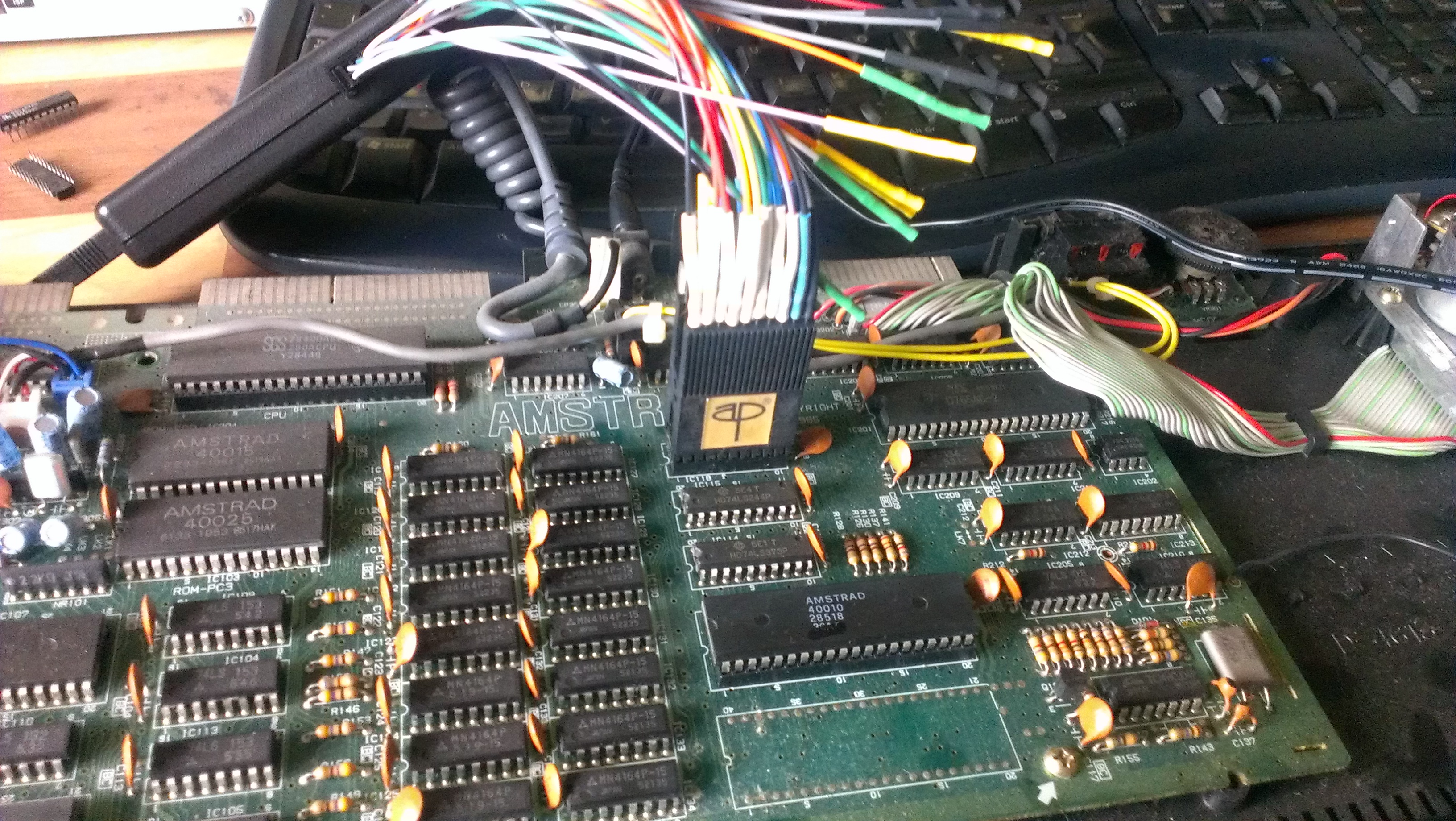
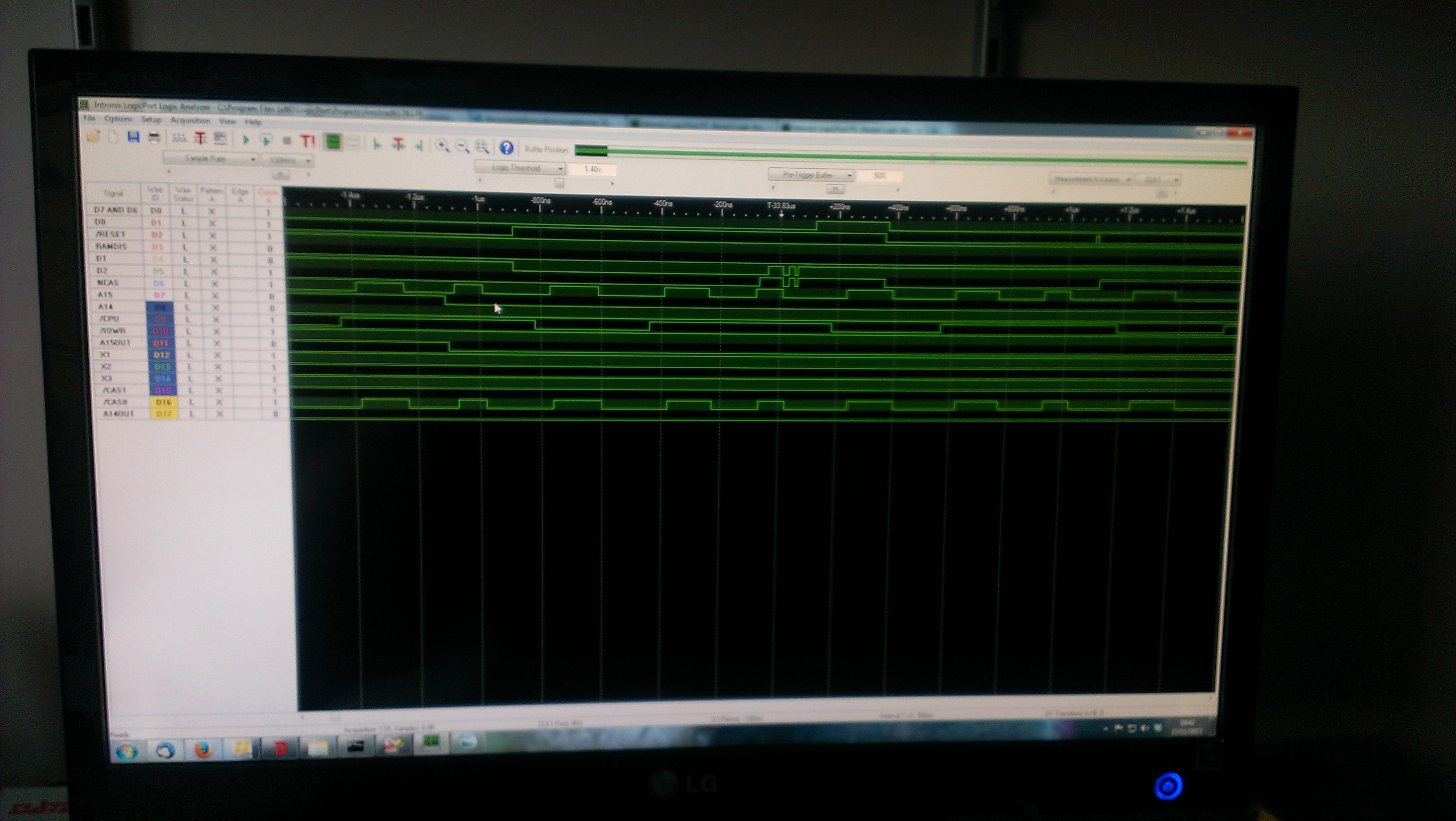
I’ve been through all the info I can find online and while it all makes sense, it does not help me implement the equations properly.
The devices I’ve tested are locked so cannot be read out with a programmer but if you have anything to offer or can even supply a proper dump then could you please pass it on.
Thank you
Today is a day im really quite proud of.
There are now 500 entries in the PLD Archive.
Now I know there isn’t exactly 500 unique entries. Some are GAL conversions of PAL dumps and some are archives with many dumps in them but considering before I started on this project there were only a handful of dumps available I think all of us who have contributed to this in someway deserve a pat on the back for all the effort.
Thanks to everyone who has helped and keep them coming in
Today I got a chance to test out the two new conversions from Darksoft.
First is Knights of Valor: The Seven Spirits.
Never heard of this game before.
It plays really well and I really enjoyed it. Once again I couldn’t see any issues with the conversion.





Second up is Guilty Gear X 1.5
I already own this game a couple of time over for the NAOMI so not too excited about this release but that’s not really the point of this project.
I had a little issue to start with as I must of netbooted the game half way through something else going on. The game only booted to the test screen and couldn’t start the game. I tried netbooting again after that and the game worked perfectly.




I’m really liking this project, its not only bringing games to my attention that I never knew existed but its also allowing me to play them.
Please, if you like these conversion them please donate a little something to Darksoft if you can. If you aren’t able to give anything then just leave a comment on his site to let him know its appreciated.